#animation media theory
Explore tagged Tumblr posts
Text
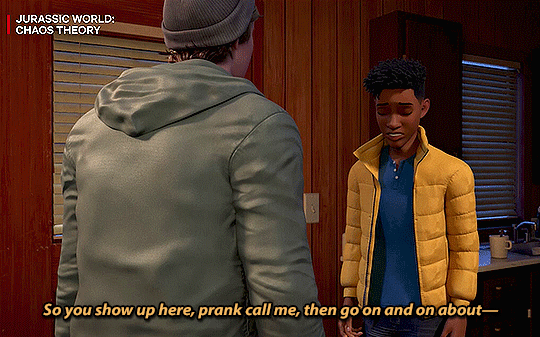

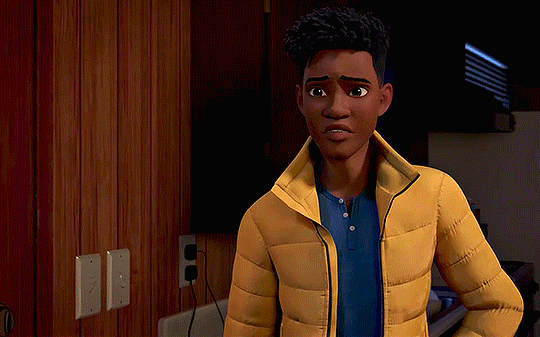
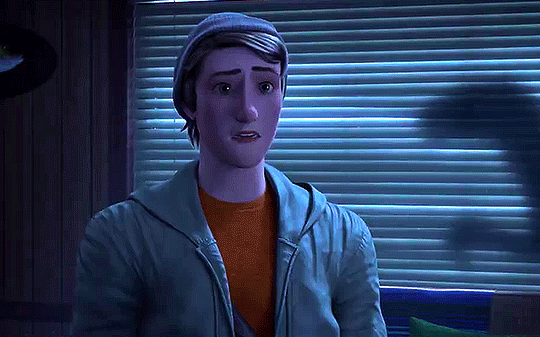
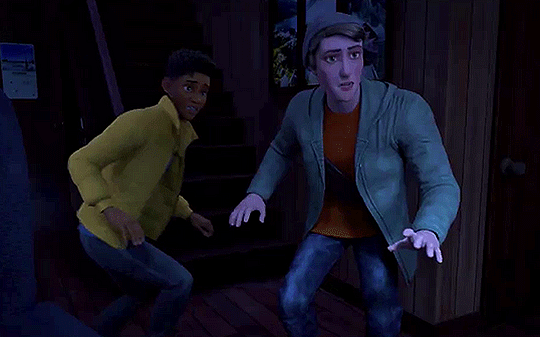
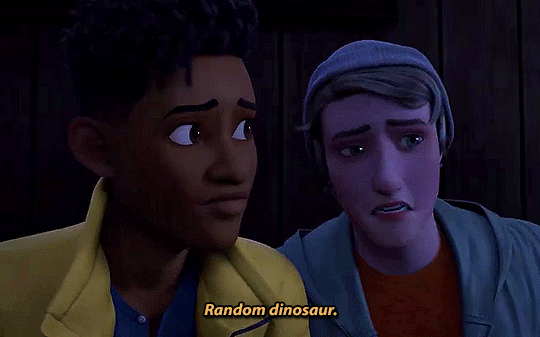

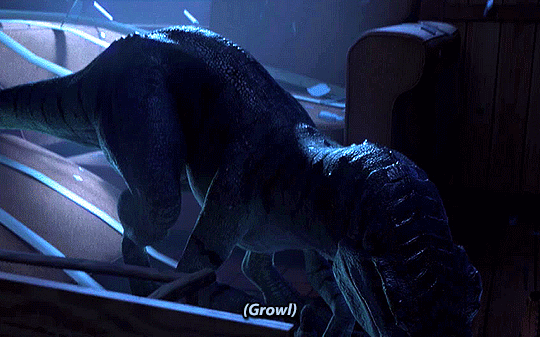
Jurassic World: Chaos Theory - Cabin Attack Clip ☆
#please excuse the title overlay in the first gif#there was no possible way for me to crop it out without completely ruining the shot 😭#darius bowman#ben pincus#ben fitzgerald pincus#jurassic world chaos theory#jwct#chaos theory#...#benrius#:)#jurassic world chaos theory spoilers#jwct spoilers#chaos theory spoilers#dailynetflix#dreamworksedit#dreamworks animation#man. i learned SO many things while making this set#figured out how to use VLC media player to get my frames#and also how to fix the frame rate after exporting#OH and now i know how to position the text in photoshop using xy coordinates (IT'S CTRL+T. THAT'S IT.)#good times good times ...#edit#mango edit
553 notes
·
View notes
Text
I turned my post (about the ways Arcane uses our understanding of film and digital media to tell its story) into a video! Enjoy!
#arcane#arcane season 2#arcane theories#arcane animation#arcane analysis#jinx (arcane)#arcane vi#arcane ekko#powder arcane#Jayce#arcane magic#arcane league of legends#media analysis#media literacy
95 notes
·
View notes
Text
Dan Da Dan mangaka is a homestuck fan
My partner was looking up the Dandadan manga just for fun or whatever and sent the magazine/book page that looks a bit different in the anime and immediately I felt an eerie sense of familiarity...

Obama going into space on a special mission remind anyone else of a certain piece of media?

At first I was like surely Dandandan has been out for some time before getting an anime adaptation; so, it's probably just coincidence... right?
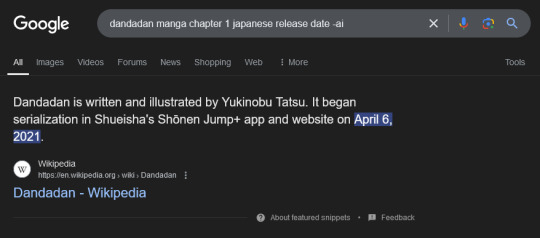
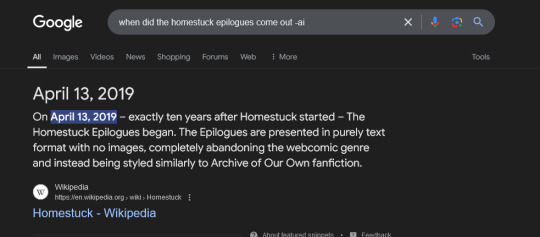
Oh how wrong I was... truly, we can never escape it. We cannot fight the Homestuck.
#watch there be some super obscure homestuck fanart that the mangaka made in like 2015 or something too probably#can't even escape hs fandom when I'm looking at dandadan or dan da dan however you wanna write it#I'm not actually complaining I just think it's a neat coincidence I actually rather like homestuck yes even the epilogues and beyond canon#mangaka is a homestuck fan that's my new harmless conspiracy theory now#whats with obama and going into space in these 2 pieces of media absolutely wild if just a coincidence#it's surprising how fast this manga started getting adapted into an anime tbh but I guess that's the pace of things these days#mine#op#homestuck epilogues#homestuck epilogue#dandadan#dan da dan#homestuck
64 notes
·
View notes
Text
Nanika's powers, nature, and narrative function: an analysis/theory.
First, and most central to this theory, I am a firm believer that Nanika is in fact "Ai", one of the Five Great Calamities from the Dark Continent. Ai gets its name from the sound it makes, which is the same way Nanika replies when given a wish. (In the English dub, this is translated as "'kay", since "ai" is also an alternative reading of "hai", which means "yes/okay".) "Ai" is also the Japanese word for love, leading to my interpretation that Ai (and therefore Nanika) is a being whose nature is love and care, not destruction. In addition, Ai's title is "codependence of desire", which could relate to Nanika's desire to please and her wish-granting abilities. Basically, for the sake of this theory working, I am going with the assumption that Nanika and Ai are one in the same.
To my second point: while killing may be easier for her, her healing abilities do not cause the same destructive backlash. While her granting other wishes hurts and kills others, healing only causes her to feel tired. Given the opportunity for proper rest, Nanika is capable of healing very extreme injuries in seconds/minutes and with no long-term consequences. Sure, she has to be touching the target, unlike when she kills, but I do not necessarily think that discounts my theory. According to Killua, in fact, healing is an exemption to one of Nanika's other rules: no matter how much effort it takes, she won't make any cruel requests afterwards.
As far as I remember from my last rewatch of the episodes Alluka is introduced, there is no mention of victims of wishes made before the rest of the family found out about her. The earliest (chronologically) flashback featuring Nanika shows that Killua is already aware of her and how her powers work. He makes a wish to her in this scene ("lift me up high"), implying that he has made wishes to her before, since he knows what to do. However, to my recollection, there is no mention of deaths caused by wishes made during this time.
While this could be explained as the Zoldycks not knowing about Nanika and therefore not tracking anything, I propose another answer: there simply were no deaths at all.
"But Dolly," you say, "that doesn't make sense with the rules of Nanika's ability!" To this I propose: Nanika's rules are selective, and with the right circumstances, do not exist at all.
Killua explains that the more times Nanika's requests are granted, the more extreme they get, in proportion to the last wish she has granted. When she kills someone for denying her, her requests return to the easier, simpler ones. Following this, Killua's requests were very simple and likely would have caused a low death count. However, there must be at least one time where Killua was unable to fulfill Alluka and Nanika's requests - but he survived. Killua's exemption from her rules implies that they are somewhat self-imposed, but then why would she have them in the first place?
When we first meet Alluka, she makes four requests of Killua before Nanika appears. This marks another way Killua is an exception to Nanika's rules. Killua only fulfilled three of Alluka's requests (as he did not die when requested), and did not fulfill them consecutively. (If my memory serves correctly, all other wishes were granted after three requests being fulfilled in a row.) Illumi says that this is because only three requests were made by Nanika, and only her requests count; however, all four requests were made by Alluka. If Illumi is correct that only Nanika's requests count, then that implies that Nanika can grant Killua wishes whenever she wants. In addition, there is no death toll to the wish he makes when he leaves with her (to kiss him on the cheek if they make it out).
In addition, Alluka's requests to Killua are easy to complete, aside from 'die'. Since 'die' is the first one, I'm going to assume that this is because of the last wish she granted. So her first request is a more extreme one, fitting with their rules. However, when Killua doesn't comply, and only plays dead, Alluka switches to easier requests, like playing with her.
I've seen many explanations as to why Killua is exempt from Nanika's rules - she and Alluka love/care for him, want his praise, etc. However, I'm going to say that it's not because they care about him - it's because he cares about them.
Killua is the only character in the series who genuinely loves and cares for Alluka. Her family treat her as less than human, and the servants there were taking care of her as a job. A job that some of them clearly wanted out of. Killua is the only character who loves Alluka - and also the only exemption to Nanika's rules.
Here's my theory:
Nanika's rules only exist when interacting with someone who doesn't care about her.
She's a test of selfishness.
That's why Killua can get away with not fulfilling her requests, why she can grant wishes for him without waiting, why there are no death tolls attached to wishes he makes. Because unlike everyone else, Killua loves her, and this causes her to lose her limits.
Also note that, aside from Killua, all the requests made to Alluka are selfish ones. Things like making a woman rich, getting a top-of-the-line computer, or even killing people for them because the person didn't want to do it themself. These are things that a) do not benefit Alluka herself, and b) do not benefit anyone but the person making the wish.
Contrast with Killua's (known) wishes. Killua's wishes have direct benefits for people other than himself. When he asks Nanika to "lift me up high", he asks her to play with him - Nanika seems to find it fun as well, so it benefits her, too. Similarly, Alluka enjoys being with and showing affection to her brother, so she's happy to fulfill his request to kiss him on the cheek if they escape. Killua's other known requests include him asking Alluka to heal people or animals, which benefits the subject being healed. The only truly "selfish" request he makes is for Nanika to "never come out again", which wasn't for his benefit - but rather, he thought it was the only way to keep Alluka safe. When he realizes he's wrong, he amends his mistake and requests that Nanika wake up again so he can apologize to her, and make her feel better.
Conclusion/final theory:
Nanika is a being whose nature is love and care. When shown love and care by another being, she's able to grant wishes without her rules, as a selfless act of giving. However, when a person who does not care about her makes selfish requests, granting wishes causes death and destruction. Like the rest of the Five Great Calamities, Ai was brought back to the known world as a "lesson" for humankind. In Ai's case, this is a lesson to not be selfish, or to take things only for one's own gain. Nanika's nature is to help and heal those around her in a symbiotic (or 'codependent') relationship, where she receives love and care from someone in return for granting their wishes. Potentially, in her natural habitat in the Dark Continent, she would function as a check to keep the rest of the ecosystem in balance, able to fix and change things if something went wrong. This could lean into more of the 'codependent' description, as she would be benefiting from it regardless (granting their wishes to balance the ecosystem benefits every part of the ecosystem, including her, in addition to being loved by the other creatures around).
My personal theory is that the expeditions to the Dark Continent somehow hurt the things they brought back, or damaged the land that sustained them. In getting the Trinity Elixir, the team acted selfishly and did not respect the land or its inhabitants. In turn, Ai attacked them, and was sent back with them as a lesson. Perhaps the group wanted to take all of the Trinity Elixir, instead of only some of it, disregarding the harm it would do to the land and the flora and fauna that relied on it.
And now here is the section where I say thanks, Togashi, for this absolute masterpiece of a series that you have made. I can't believe I keep finding more. I love it. This series is incredibly written, with wonderful characters and worldbuilding, and I will be sad to see it end (whenever it does) and hope Togashi will be able to write the ending he wants. I love this series dearly and I love how much thought is put into it.
@codeinerabbit @teddy-blegh @monstrousparalysis @anxious-mess19 bc y'all know hxh and I'm Going A Little Bit Insane Right Now
#hxh#hunter x hunter#hunter hunter#hxh theories#hxh thoughts#hunter x hunter analysis#hxh analysis#anime analysis#manga analysis#hxh anime#hxh manga#analysis#anime theory#anime thoughts#nanika#alluka zoldyck#hxh alluka#alluka and nanika#hunter x hunter alluka#yoshihiro togashi#tinfoil hatting#<- that's gonna be my general media theories tag#because I have lots of thoughts about many things
35 notes
·
View notes
Text
Oshi Culture

Oshi Culture (推し文化, oshi bunka) is a Japanese socio-cultural phenomenon centered around the passionate support, admiration, and devotion of fans toward specific idols, artists, fictional characters, or entertainers. The term "oshi" (推し) derives from the verb osu (推す), which means "to recommend" or "to support." Within fan communities, “oshi” refers to a fan’s favorite member of a pop group, cast of a show, or even a favorite character in fictional narratives such as anime or video games. Although the concept originated in Japan, Oshi Culture has expanded globally through the proliferation of J-Pop, K-Pop, anime, manga, and internet culture.
Oshi Culture is distinct from general fandom in that it involves an intense, often emotional commitment to a single person or entity, whom the fan follows loyally, celebrates, and invests time, emotional energy, and often significant financial resources into supporting. It is deeply intertwined with Japan’s idol industry and otaku subcultures and has influenced broader cultural attitudes toward celebrity, consumerism, and emotional expression.

The linguistic root of "oshi" lies in osu (推す), meaning "to support" or "to back." The modern cultural usage of "oshi" began taking shape in the early 2000s, closely tied to the rise of idol culture in Japan, particularly with the proliferation of girl groups and male pop units under large entertainment management companies.
While earlier forms of fan culture existed around pop singers and actors in the Shōwa era (1926–1989), the specificity of identifying one’s “oshi” emerged in the 21st century. Groups like AKB48 helped popularize the term, as the group’s structure—consisting of dozens of members performing in rotations—encouraged fans to select their favorite member, who they would then actively promote, vote for in ranking contests, and support through merchandise purchases and event attendance.

At the core of Oshi Culture is a parasocial relationship—a psychological relationship experienced by an audience in their mediated encounters with performers. Fans often feel deep personal attachments to their oshi, even though the interaction is generally one-sided. This relationship is nurtured through structured experiences such as handshake events, live shows, social media interactions, and personal content such as blogs and livestreams.
The fan's role extends beyond passive consumption. Fans actively promote their oshi, participate in fan voting events (e.g., "senbatsu sousenkyo" for AKB48), and create digital and physical fan works. The oshi, in turn, is expected to maintain a certain image of approachability, wholesomeness, or authenticity to preserve this emotional connection.
Oshi Culture is closely linked to consumer behavior. Fans support their oshi by purchasing merchandise, multiple copies of music releases (especially when they include collectible items like photo cards or tickets to events), and attending live performances. This economic behavior has been termed “affective labor,” where emotional investment translates into economic output.
A notable economic practice within Oshi Culture is “multiple purchases,” wherein fans buy numerous copies of the same product to boost their oshi's popularity or ranking in polls. In return, they may gain extra benefits such as more votes or additional access to fan events. This system has been criticized for encouraging excessive spending, but it is an accepted and widespread norm within the culture.
For many, having an oshi becomes a form of self-identity. The act of supporting someone—watching them grow, overcome challenges, and succeed—creates a mirrored emotional journey in the fan's own life. This is particularly emphasized in idol culture, where idols are often marketed as "unfinished" or "developing," and fans are encouraged to “raise” or “nurture” their oshi by supporting their growth.
Fans derive a sense of purpose, community, and emotional fulfillment from their engagement. The oshi becomes a symbol of hope, inspiration, and emotional stability. This has led some psychologists to draw parallels between Oshi Culture and emotional coping mechanisms, especially among socially isolated individuals.

Idol culture is the primary ecosystem from which Oshi Culture arises. Japanese idols are typically young entertainers trained and promoted by talent agencies. Their appeal lies not in technical perfection but in their perceived authenticity, charm, and potential for growth. Fans choose an oshi from a group and follow their career trajectory, often through direct interaction events.
The structure of idol groups—large rosters, rotations, and frequent "graduations" (retirements)—encourages fans to commit deeply to specific members while constantly adapting to new additions. The resulting emotional investment is a hallmark of Oshi Culture.
Oshi Culture also thrives in otaku communities, particularly around 2D characters from anime, manga, and games. In these cases, the "oshi" may be a fictional character whom the fan supports through merchandise collection, fanart, cosplay, and online discourse. This is especially prevalent in franchises like Love Live!, The Idolmaster, or Touken Ranbu, where character-centered narratives allow fans to form emotional attachments similar to those found in idol fandom.
This dimension of Oshi Culture blurs the line between reality and fiction, emphasizing the emotional authenticity of the fan experience rather than the ontological status of the oshi.
While Oshi Culture is most associated with Japan, its elements have spread internationally, especially through K-Pop fandoms. Korean pop groups, such as BTS, BLACKPINK, and TWICE, also operate with a structure that encourages fans to pick a "bias" (the K-Pop equivalent of oshi). The emotional and economic engagement of fans in these contexts closely mirrors that of Japanese Oshi Culture.
Platforms such as Twitter, TikTok, and Weverse have amplified the global spread of Oshi Culture by enabling fans worldwide to share content, express devotion, and organize fan-driven initiatives such as birthday projects, charity donations in the oshi’s name, and digital fan campaigns.

The emotional core of Oshi Culture is the parasocial relationship between fans and their oshi. These relationships are often characterized by consistent one-way communication where the oshi may "respond" through general messages, performances, or simulated interactions. For many fans, these interactions fulfill social needs and provide emotional stability.
Studies in media psychology have found that parasocial relationships can be as emotionally significant as real-world relationships. However, they may also lead to obsessive behavior or social withdrawal in extreme cases.
Oshi Culture fosters vibrant fan communities both online and offline. Fans of a particular oshi often form tight-knit groups, sharing information, coordinating support actions, and organizing meetups or fan events. These communities create a sense of belonging and shared purpose, acting as support networks and cultural microcosms.
Events like birthday celebrations, anniversary projects, or collaborative fan art exhibits are often coordinated within these communities. In Japan, cafes and venues may host themed events for specific oshis, allowing fans to physically gather and celebrate.

One major criticism of Oshi Culture is its commercialization. Fans are often incentivized to spend excessively to support their oshi. Tactics like limited edition goods, exclusive content tied to purchases, and ranking-based privileges have led some to describe the system as exploitative.
The idol industry, in particular, has been criticized for commodifying young performers and manipulating fan emotions for profit. The industry’s emphasis on purity and accessibility can also lead to toxic expectations for idols, especially when fans expect their oshi to remain single or avoid personal autonomy to maintain an idealized image.
While Oshi Culture can provide emotional fulfillment, it may also lead to problematic behaviors, such as emotional dependency, obsessive collecting, and withdrawal from real-world relationships. In extreme cases, fans may experience identity confusion or depressive episodes when their oshi graduates, is embroiled in scandal, or retires.
Additionally, the intense social competition within fan groups—especially in ranking systems—can lead to infighting, stress, and social alienation.

Oshi Culture represents a unique fusion of emotional investment, consumer behavior, and identity formation. It is both a deeply personal and socially communal practice that reflects broader shifts in how individuals relate to celebrity, media, and emotional expression in modern societies.
In Japan, Oshi Culture is emblematic of broader socio-economic phenomena, such as declining birth rates and increased digital interaction, which have reshaped how people find meaning and community. It has also influenced global fandom practices, contributing to the normalization of highly engaged, emotionally expressive fan behavior across media cultures.
In academic contexts, Oshi Culture is studied across disciplines including media studies, sociology, anthropology, psychology, and cultural economics. It continues to evolve, particularly as new forms of media and virtual entertainers (such as VTubers) expand the boundaries of what it means to "have an oshi."

Oshi Culture is a complex, multi-faceted phenomenon rooted in Japan’s media and entertainment industries but transcending them to encompass emotional, psychological, economic, and social dimensions. It is a powerful example of how modern individuals forge meaning, identity, and connection in a mediated world. As media landscapes continue to change, Oshi Culture is likely to remain a central and influential aspect of global fan behavior.
#oshi culture#j pop#japanese idols#akb48#idol culture#oshi#otaku culture#anime fandom#manga fandom#fan culture#stan culture#oshimen#j culture#pop culture studies#media studies#oshi katsu#fandom psychology#fandom economy#parasocial relationships#fandom analysis#love live#the idolmaster#vtuber#japanese pop culture#decora fashion#otaku aesthetic#kawaii culture#fandom community#fandom life#fandom theory
12 notes
·
View notes
Text
They are trans and I will die on this hill
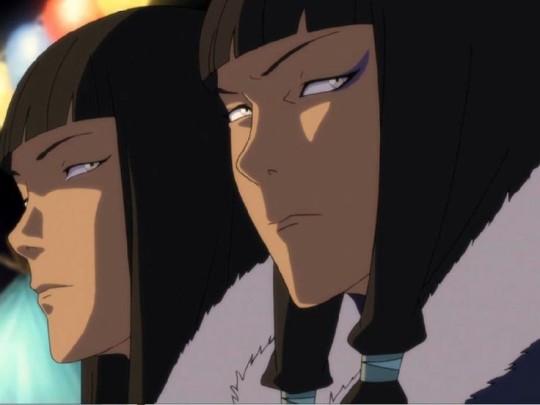
Desna (left), from The Legend of Korra
Look, that's seriously talk
Do you know what are bivitelin and univitelin twins?
Univiteline twins are the ones whose embryons are from the same origin
Biviteline are the ones whose embryons are unrelated, but happened to envolve and born at the same time
Biviteline twins often look very different, in what univiteline twins are identical
Obvsiously thought, they even have the same genes
Did you know uiviteline twins also are always the same sex
They are made of the same seed after all
See what I mean?
Eska and Desna as obviously univiteline
And they have different genders: Desna's a boy and Eska is female
I assume Desna is the trans one, since their designs, aside from being identical and giving us a vibe of nobelty and inaproachableness expected of the North Pole prince and princess, tend more to a feminine aesthetic
Also, Bolin thought they were both girls firs time they met lol
In a side note, Bryan Konietzo and Michael Dante Dimartino have a history of representing minorities, such as disabled characters

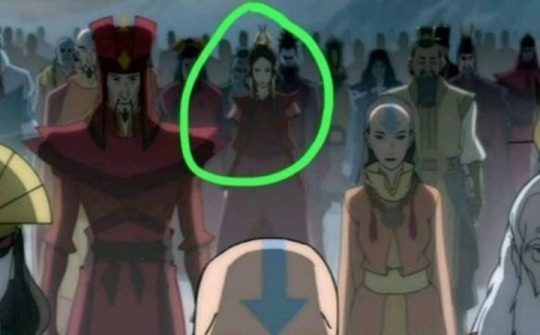
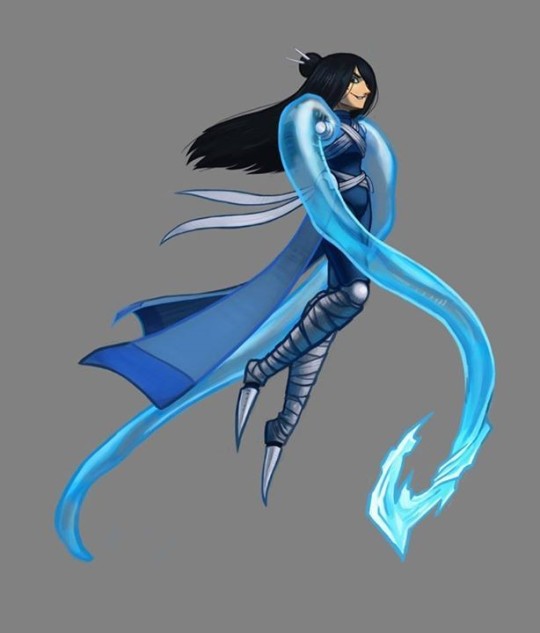
And brown/black people

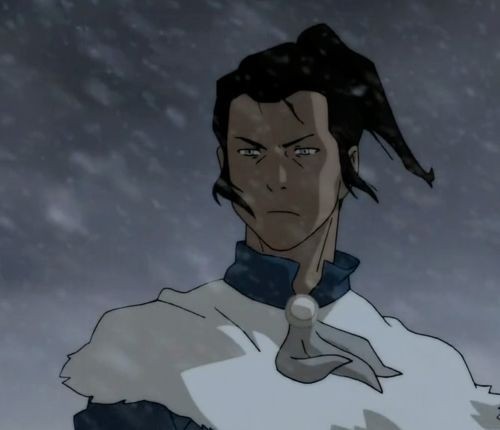
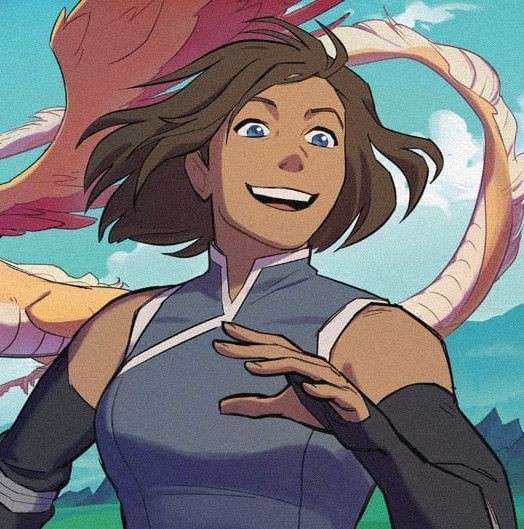
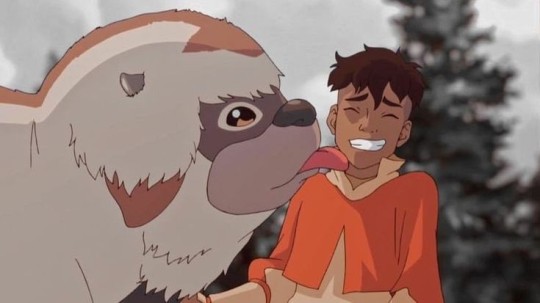
As well, as they already have done queer characters (Asami and Korra), despiste the latter's representation abeing way more sutile
So it's natural to guess that the level of sutileness would be the same while approaching another queer character
Logical conclusion: Desna is super trans
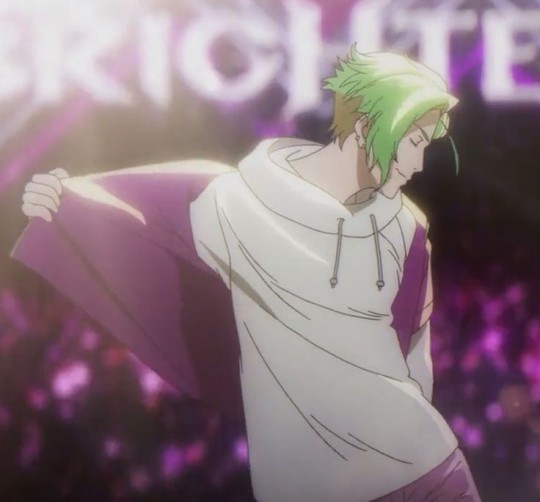
Pyotr, from Carole and Tuesday
This guy
Come on, have you heard his music??????
Like, have you heard his music??
#trans#theory#fandom#anime fandom#carole and tuesday#lok#tlok#the legend of korra#legend of korra#avatar#avatar: the legend of korra#pyotr#desna#eska and desna#headcanons#representation#transgender#trans headcanon#trans characters#trans media#trans representation#diversity#bryan konietzo#michael dante dimartino#thanks for coming to my ted talk#alt text#alt text described#long post
170 notes
·
View notes
Text
The Kanto region is aesthetically Japanese but its culture seems to be more rural American than anything. Let me explain.
There is no politeness culture in Kanto. Even if you ignore the English dub’s added sarcasm, people are assholes to each other through actions. Just look at how dismissive, unhelpful and sometimes even homicidal complete strangers can be to the three child protagonists.
There are guns in the OG anime. Lots of guns. Ash has been threatened with real guns several times throughout the series, and there was an episode that got banned in the US due to the sheer amount of times the safari zone manager threatened to kill him.
Kanto is a region based around technology, but a lot of the tech is big, clunky and not quite as impressive as the stuff from other regions like Galar. Now, of course, this is due to art style drift, as well as the fact that Kanto came first and all of the cool stuff like Rotom tech was invented later, but in-universe, Kanto relies the least on Pokémon-derived technology and its machines and computers are all big and boxy, as well as all the cool sci-fi tech like holograms and such being mostly absent there.
Trip refers to Kanto as “the boonies” which implies that he (an outsider) views Kanto as a region of backwards hillbillies. Trip is an asshole but these stereotypes do not come from nowhere, and there must be a significant portion of people in Unova who think of Kantonians as a bunch of stupid yeehaw people.
I dunno, this was just something I noticed while watching the OS. Feel free to correct me if I’m wrong about something or add onto this if you want. I’m fine with whatever.
#pokémon#pokemon#pokeani#pokemon anime#media analysis#analysis#theory#theories#kanto pokemon#gen i#pkmn#kanto#kanto region#worldbuilding
15 notes
·
View notes
Text
I sometimes think about the Phaeacian ships (also sometimes called Scherian ships) from The Odyssey (or at least Homer's telling of that story). Mythological ships that were able to be steered by thought alone and needed no pilot (and if I remember also no crew for the most part). You just told it where you wanted to go and it would navigate itself and be the fastest ship in the planet as it does so.
There is very little information about them as they are only mentioned as the plot device to get Odysseus finally home, and were destroyed by Poseidon for helping Odysseus, but I do sometimes wonder how damn good actual IRL Scherian ships were and how fine their sailors were for Homer to attribute semi-sentient and swift status onto their ships. I wish there were more myths about them.
I don't have a copy of The Odyssey anymore so the best I can do is a quote from Wikipedia:
"Tell me also your country, nation, and city, that our ships may shape their purpose accordingly and take you there. For the Phaeacians have no pilots; their vessels have no rudders as those of other nations have, but the ships themselves understand what it is that we are thinking about and want; they know all the cities and countries in the whole world, and can traverse the sea just as well even when it is covered with mist and cloud, so that there is no danger of being wrecked or coming to any harm."
-King Alcinous to Odysseus
#objectum#im not putting this in the obj media master list because this makes up less than 1% of the Odyssey#and that's being generous#also it makes me incredibly sad that conspiracy theorists have found the Odyssey#and are posting unhinged theories about these ships being proof of a hyperadvanced civ with AI/GPS#sir you're reading the story where gods exist and personally fuck up peoples day. there are witches and sea monsters#Scheria was a real place but at best I'm guessing mythology just distorted some really fine sailing ships into something insane#likely just run of the mill animism
7 notes
·
View notes
Note
If the "straight women are much more likely to write a spicy and well-written m|m romance with complex male characters because they're naturally attracted to men" claim is correct, then why do straight male authors have acquired the stereotype of writing one-dimensional female characters and lame romances if they're naturally attracted to the opposite gender? Why do they prefer to focus so extensively on the male characters and their bromances then?
First, I think we need to clarify: Absolutely nowhere did I say the spicy mlm fanfics were uniformly "well-written." 😂 There are beautiful gems among fanfiction that have moved me to tears like nobody's business, but there's also just a whole lot of... not very... philosophically deep works out there. I don't want to sound mean, but just being brutally honest, I'd wager if we considered all fanfiction across all fanfic sites, a pretty solid majority of it wouldn't meet most people's definitions of truly "well-written." (Which is completely fine! Fanfic writers aren't getting paid! They're usually amateur authors who are writing for fun and often include younger writers just learning the ropes of grammar and character building for the first time! A fic doesn't have to be perfect to be enjoyable for readers!)
On top of that, let's also just be real--a lot of the explicit-content-for-explicit-content's-sake fics out there aren't really trying to write the most realistic and three dimensional male characters ever. They're trying to write sexy fics; realistically depicting men with life-accurate emotional depth and nuance is often... not the goal. 😂
Of course there are standout fanfics and incredible fanfiction authors. But, if we're being 100% transparent, I think a solid majority of fanfic authors don't actually write male characters that well. A lot of them have limited development, unrealistic or unclear motivations, out-of-character behavior, or a lack of interiority to their thoughts and feelings. A lot of times male characters in mlm fics are even reduced to caricatures of what women want men to do and feel. (I'm not judging here though--if a woman author is writing for women and her women readers want to see men who meet women's expectations, then hey, give the audience what they crave!) Just like Disney princes, a lot of men in fanfiction would seem very unrealistic and flat if you compared them to actual men from the real world!
I think we fanfic readers are just a bit biased, you know. If you're an average fanfic reader, I'm sure you've had the experience many times of being willing to give fic writers the benefit of the doubt even if their works aren't perfect--far more than you would give an actual published author or TV showrunner.
We don't scrutinize fanworks to the same extent that we scrutinize published media. Most people aren't grabbing someone else's fic and writing a ten page essay on how their male love interest wasn't properly fleshed out. Fanfic is full of poorly written men too, we're just not looking for the writing flaws when we read fanfics, at least not to the extent that meta analysts notice flaws in published media.
Side note that I also think is worth thinking about here: Because most fanfiction readers are female (and statistics suggest that a majority are even cisgender women), I think we're already at a slight disadvantage. Do female readers really have the most accurate perspectives on what realistic and three dimensional men would feel or act like? People are people, of course, but my perspective as a cisgender woman is never going to be as "100% genuine" as the perspective of someone who actually identifies as a man.
Second, and sorry, I know this is already long, but I think it's actually a mistake to buy into the stereotype that a majority of male authors can't write believable and interesting female characters. I think this illusion comes because fanfic fandoms congregate around very specific types of media, and often (though of course not always) that media is geared toward younger audiences. The bulk of the fandom claims that "male authors suck at writing women" come out of the shounen anime and young adult genres which are so prevalent in fandom spaces.
The target audiences for both these types of media are teenagers, who (I'm going to be completely honest) are usually not that picky about the development of the characters in the stories they read. I don't mean that no teenagers care about well-written stories (obviously there are many who do!), but that the typical standard for philosophical depth and nuance to which media for young adults is held is, for better or worse, lower than the standard we hold media for adults to.
We don't expect Twilight to be as deep as Moby-Dick. We don't expect My Hero Academia to be Maus.
This isn't an insult to young adult media; we have different genres of content for different reasons, and I definitely would not have wanted every single manga I read as a teenager to be as mentally or spiritually challenging as Moby-Dick. Content for teenagers should be designed to resonate with teenagers, both intellectually and emotionally. Many works for teens can have excellent writing and punch above their target audience demographic too. But the bulk majority of teenage readers are not (yet) going to be experts in literary criticism and sociocultural theories, capable of pounding out advanced meta analyses of the gender dynamics of characters in their favorite stories. Some will, but most won't.
Stories for young adults just don't have to hold up to that level of scrutiny, at least among their target audience.
At its core, however, the issue with the lower standards for depth of character building in young adult media is that it corresponds with lower standards for becoming popular as an author in fields such as YA lit and shounen manga. You don't have to be Leo Tolstoy or Emily Brontë to gain recognition among younger audiences. Sometimes, you don't even have to be good. Twilight was a roaring success, even while people lambasted it for being poorly written.
You don't have to be a literary giant whose books will be short-listed for addition to the canon of classical literature to develop a massive online fandom; Voltron was insanely popular despite being terribly written. 😂 You don't have to be god's gift to storytellers to become a popular shounen mangaka; Naruto is still one of the most popular manga in history and I hope no one genuinely thinks its characters were masterfully developed.
I'm not saying it doesn't take talent! It absolutely does! What I believe is that there's just not a guaranteed correspondence between "this author is popular and has a huge fandom" and "this author is actually good," especially in genres where the target audience is younger and therefore a little less likely to deeply critique the media they consume. Even if your characters--male or female--aren't that well-written, you can still get very, very popular in internet fandoms, especially with younger and more forgiving audiences, where only the rare few in the fandom will dedicate hours of their lives to performing meta analysis of your work, picking apart the writing quality and development of your characters.
So, long story longer: It's not that male writers overall are incapable of writing women. It's that a lot of fandoms spring up around kind-of-poorly written stories in the first place, and male authors who are not great at writing in general are equally unlikely to be great at writing women.
In fact, I'd suggest that male writers who are poor at writing women are probably also not great at writing men. Like, come on, don't tell me you think Bakugou and Midoriya's writing was good by the end of My Hero Academia.
Many popular authors with big fandoms are just being given more of a pass when it comes to writing poor male characters than they are with their female characters, and I'd argue that's likely because of the same reason I highlighted before: Their fandoms are dominated by women who like men and are willing to do more work to flesh out/fix the male characters they're interested in.
(It also helps that, with an overwhelming number of fic writers being female, they have less insight into truly depicting the male experience in authentic ways in the first place; if you are a woman, you're more likely to recognize a poorly written female character on the spot, while having at least slightly less ability to identify the unrealistic or inaccurate elements of male characters.)
Essentially, it's confirmation bias in action: We think men don't understand women, so we scrutinize male writers' depictions of women very closely, all while giving a pass to the fact that a lot of these writers just kind of suck at writing men too.
The "lame romances" in stories written by men aren't exclusively lame because of flat female characters--if the female character is flat, half the time the male character is flat too, and the romance is lame because the writer overall is... kind of lame... 😂
But why all the bromances? I wrote about this in my big long essay before, and I think there's plenty of very complicated reasons that men write so many male-male friendships and relationships into their story (re: coming from genuinely misogynist cultures, deliberately baiting fans with hints of BL, an actual internalized desire for greater emotional connection with fellow men due to perceived male loneliness, self-projection into their own characters, having been told they aren't good at writing women so they've given up, etc. etc.), but I honestly think one of the simplest reasons is genre. The majority of these "bromances" are coming from shounen manga, and shounen manga has some very common recurring tropes, chief among them being the whole "me and my ~RIVAL~" dynamic.
A lot of mainstream shounen stories have had such enormous success with this "young male protagonist and his best bro/rival/arch-enemy" dynamic that, frankly, I think many modern manga are just piggy-backing on the trope. "Dudes who beat each other up and become besties" has worked for so many series now that it's just become a staple of the entire genre.
I also think the market for Japanese manga in particular is very unique, with male manga artists recognizing--and capitalizing--on the power of the "fujoshi" reader early on. It's easy for shounen manga artists to see the benefits of over-stocking their stories with male characters and queerbait, because hinting at mlm ships they have no intention of ever paying out on 1) rarely reduces their male readership and 2) actually broadens their readership dramatically by deliberately bringing in female readers.
Basically, so long as the endgame is a het ship (or at least no ship), male readers will still read a story even if it has mlm shiptease, while more women will be drawn to the story for the mlm shiptease when they otherwise might not be that interested. There's no way to lose.
In essence, on the topic of queerbait, the shounen manga artists were just really savvy and realized faster that "having your cake and eating it too" is possible by incorporating a higher number of male-male relationships in their stories in order to broaden their readership and sales. Comparatively, western media was just much slower to cotton on to this technique, and I'd say it wasn't until relatively recently that western series have begun hyper-emphasizing male-male relationships specifically to appeal to women readers and viewers (see Supernatural, Good Omens, probably Teen Wolf [I don't actually go there so I can't confirm but I feel like this is true lol], etc.).
And, one final sidenote: I think it's difficult to compare published media to fanfic in terms of "featuring what you're sexually attracted to" because in published media, people are at least supposed to pretend their own sexual preferences aren't entirely warping the story, especially in young adult series (which have the biggest fanfic fandoms). Like... Compare: If you're a shounen manga artist you can get away with some panty shots but you can't be a flat out gooner--conversely, if you're a fanfic writer, you can write hardcore porn without hesitation. If we want to make an actual comparison in how much sex appeal sways character gender ratios in fanfic versus published media, I'd say the only comparable match would be comparing the ratio of female characters in harem anime and straight up hentai to the ratio of men in fanfics. We can't be out here comparing like... the original story content of Harry Potter (made for children, cannot be overly sexual) to its AO3 content (where nearly 40% of all HP fics are labeled explicit/mature). You gotta compare 18+ apples to apples.😂
Phew, sorry, that was a lot.
tl;dr: Tons of factors--yes, including misogyny--affect how men write women, but the issue of male writers being bad at writing women is likely being exaggerated in fandom spaces because 1) Fandoms are overwhelmingly female and women are better able to identify and critique poorly written female characters than anyone else, 2) Most of the biggest fandoms on the internet center around stories for younger audiences who haven't had enough time to develop strong media literacy and literary criticism skills, allowing writers to become popular without necessarily needing to be of highest quality, 3) Female fans are more willing to forgive poorly written male characters because they're more likely to be interested in and attracted to those male characters, and 3) A lot of writers just suck in general; it's not localized to just being shitty at writing women.
#fandom stuff#meta analysis#female characters#writing stuff#gender in media#I genuinely think part of the problem with meta analysis in fandom#despite being a person who regularly engages in it myself#is that we do apply extremely adult concepts like gendered power dynamics#sociocultural theories#intersectionality and more#to stories that frankly weren't written to hold up to that level of scrutiny#every character in a shounen anime looks poorly written#when you look at them through the lens of like...#simone de beauvoir and lacan#a lot of the media that is popular in internet fandoms#was actually written for much younger audiences#and the expectations we have for depth and nuance#are often outside the work's goals and target audience in the first place#I'm not saying authors have a free ticket to suck at writing characters#let alone at writing women#but that we need to avoid the fallacy that popularity = quality#and not enter into an analysis of a text with foreordained conclusions in mind#if you set out to critique a story's female characters#but choose not to equally critique the story's male characters#of course the female characters will look worse#meanwhile the male characters will be flat out garbage lolol#but they'll get the pass because the fandom girlies find them cute
16 notes
·
View notes
Text
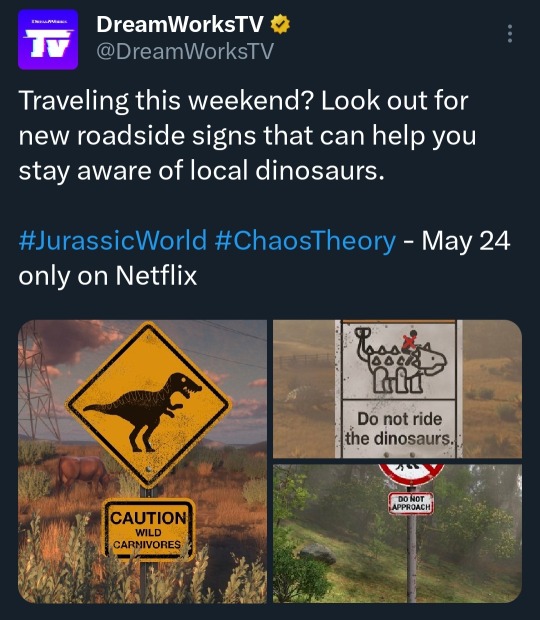
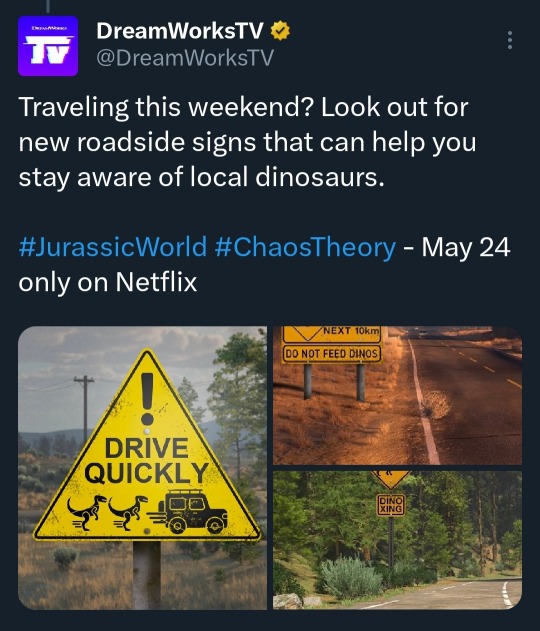
more promotional material from DreamWorksTV! love to see little details like these, they're what really breathe life into the jurassic world universe 🦖


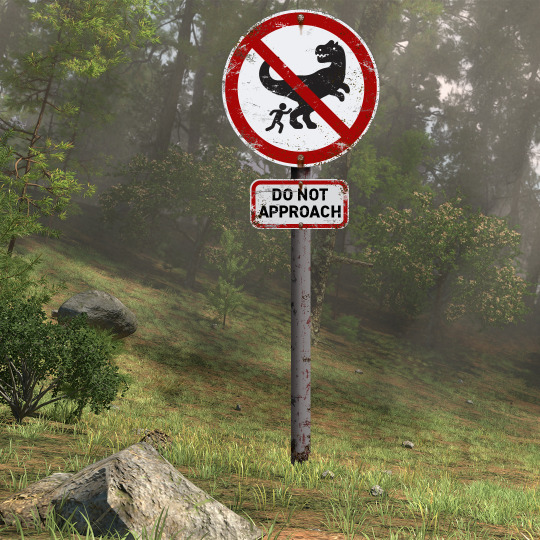



#btw @dreamworks if you need someone as your tumblr social media manager i'm available for hire#jurassic world chaos theory#jurassic world#jwct#chaos theory#dreamworks animation#official#mango roars
470 notes
·
View notes
Text
A Ruff Ruff Danger Dogs Theory
Okay, since the series is one big homage/parody of Super Sentai/Power Rangers, I can’t help but feel like it’s in the realm of possibility that a Sixth Danger Dog/Ruff Ruff Green will be introduced later down the line. I’m literally basing this on nothing but the typical conventions of the media the show is based on, but I still think it’s something to consider going forward.
#ruff ruff danger dogs#ruff ruff red#ruff ruff blue#ruff ruff yellow#ruff ruff pink#ruff ruff black#independent animation#indie animation#stop motion#mixed media#tokusatsu#super sentai#power rangers#theory#fan theory#random#shower thoughts#ramblings#food for thought#word vomit
17 notes
·
View notes
Text
youtube
My deep dive into the world of Sophie Twilight, the asexual vampire. Ms Vampire Who Lives In My Neighborhood is an anime that's queer on every level, and if you haven't watched it, I highly recommend it. Took me 3 months to make this video, but it was worth it. This anime deserves more love!! Shoutouts to @freebeehoneytumbles for her wonderful artwork, which features heavily in the video, and to @buttercatrho for their work on the Grand Finale.
#tonari no kyuuketsuki san#ms vampire who lives in my neighborhood#yuri#yuri anime#video essay#media analysis#asexuality#queer theory#Youtube
119 notes
·
View notes
Text
Alright fine I started watching tbhx and I was greatly charmed by the animation, music, and the themes of identity loss, media control, and the horrors in maintaining autonomy while being influenced by a culturally regulated reputation system. I will be rooting for the dog and his little girl. Thank you for your understanding.
#i needed to know why muts were simping for col sanders on my dash i needed to understand#i did see his character story video. counter theory: he needs to eat copious amounts of sugar#i sat down and worked on my little projects and i loved it. i am recruiting all of my animation friends to watch it too#couldn't help but notice the parallels between a numerical trust system and the parallels between how the 'social credit system'#is thought about outside china considering it is a chinese animated series. but that is a topic filled with#misconceptions and conspiracy theories that i do not feel comfortable touching#more like i am noticing that i do not think that is an accident. social anxieties shape horror etc etc#something something super heroes used as social media influencers by big media companies?#i am not saying anything new i'm sure; i am late to the party#i've been loving the really small character stories. firm man v wolf girl killed me#probably won't post anymore speculation but dangit they got me#yes i love col sanders i mean look at him. look at him. he has an office job#but did you see the ahu character video? did you listen to his song? kisses and a cuddle#(that little girl is going to die isn't she ;-;)
4 notes
·
View notes
Text



Research: cameras and photography in sci-fi media. Mobile Suit Zeta Gundam, Episode 8: "The Dark Side of the Moon", 1985.
9 notes
·
View notes
Text
The Disposable Era of Cartoons
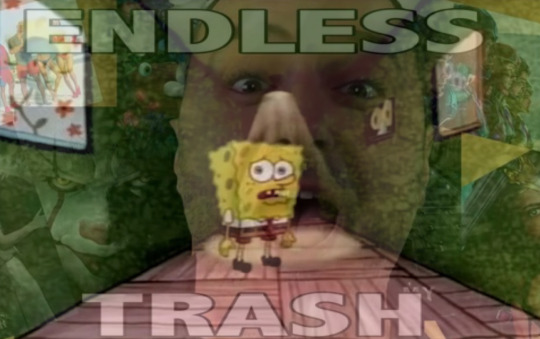
There exists many cartoons in the world that a vast majority never really bring up, and that's okay. Not everyone can watch everything all the time and you can argue that we only scratch the surface since the beginning. I've always had this deep seeded thought however of how animation's been treated, notably of tv shows. Browsing my usual "streaming" sites, I often come upon a show I've never heard of before. One just recently was Zokie of Planet Ruby, a series made by Nelvana, hosted by Nickelodeon, with its entire first season dropped on Amazon Prime on the last day of 2023. Overall, it's not a show I'm interested in, but how it was just dumped onto streaming upon other factors like that got deep seeded thought resurfacing into a theory. A theory regarding the potential era where excess is reaching its apex.

Animated TV shows I say are more arduous to make than films. Not to say films are more effortless to produce, god no, but have better limits given you'll have a set script and runtime to work off of as opposed to having to constantly produce multiple at a time for episodes ranging from 7 to 22 minutes. We work on a timeline where it's hard to believe any new story isn't derivative of already told stories, but the beauty does come in how we're able to transform them with new purposes and concepts. The workload however can be a lot many recognize but don't grasp themselves only as outsiders. The pitch getting greenlit is just the big toe in the door, finally stepping in is a matter of juggling multiple episodes a day, revising and editing, deliveries to the animators, all for the hope that it gets back in time to air. This is where I've come to appreciate The Simpsons, good and bad. Regardless of a recent season's quality, it's undoubtedly difficult to schedule fresh ideas that can stick with the same concepts for 30+ years, all to meet the quota by the beginning of the autumn season. Things have shifted thanks to streaming.

In retrospect, what felt like a novel idea was inevitably gonna turn into a capitalistic nightmare. It makes some sense that Netflix wouldn't have a monopoly on hosting every show from cable TV to be put on their newly founded streaming site in 2007. It wouldn't have been long before every other studio threw their hat in, developing their own stream sites with the properties they made and owned themselves. Competition is natural, but now you're basically spending the same prices as cable or satellite if you wanted to watch every show you remembered seeing on TV. Sites like Tubi and PlutoTV I say are the saving graces where you can shockingly find a ton of film/shows old and new for free, but you've probably seen shows and films getting removed from the sites they originate from, either to be traded to another site or written off for good because investment returns weren't a shake 'n bake. All this is because of rights ownership and a complex web of cost cutting against the people behind said shows and films. What does this mean for cartoons, though?

Like TV shows, you're gonna have a few poster boys upon a ton of shows nobody beyond avid seekers are gonna bother remembering. This has been a trend long in the making, but while many shows can be greenlit and made it can be a crapshoot as to whether the company actually believes in that show enough to market it. For Nickelodeon, it's an open secret that any cartoon not an instant hit like Spongebob, despite little promotion from the company, would be chucked onto the Nicktoons network to run out their remaining episodes. With streaming however, you'd either get something like Zokie of Planet Ruby where everything's dumped without warning or Glitch Techs where it's stuck in development limbo with half its episodes un-aired or incomplete. This isn't just with Nick however. Disney and Cartoon Network has had its fair share of duds everyone's slept on if they weren't massively eyecatching regardless of quality. The fates of their existence is dependent on who's keeping an eye on the companies. This isn't to say shows like Infinity Train and Final Space, which got removed digitally back in October and December respectively, didn't have their supporters who expressed outrage. It's to say other shows couldn't get that level of reported support, and I feel it's only going to get worse.

This is what I believe amounts to the theoretical "Disposable Era" of television, where we aren't just having companies dispose shows but create shows that are purposefully disposable. For websites designed to stream cyclically endless content, this will mean an exponential ton of commissioned projects for cheap that anyone will pick up once, never watch again, and can be written off immediately after a small period because no one outside the crew responsible would notice, incapable of viewing unless someone miraculously torrents everything. While I've brought up TV in general as opposed to just animated stuff, I personally feel the efforts and imaginative possibilities of animation count more for the generations that grow up with them as much as the influences they can have on artists. And I can feel it's discouraging for creators to know that their work can be eventually assembly lined, worst than reality tv, and then erased for tax breaks because nobody thought about them for more than the weekend they binged it all.
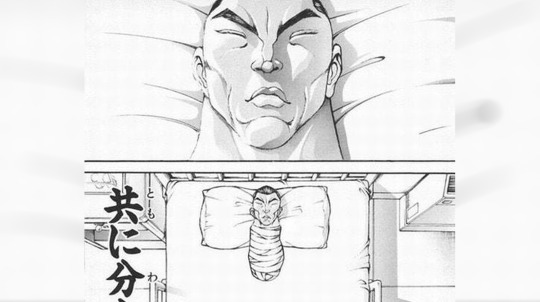
This is all if you don't account for anime studios like MAPPA which are a whole other horrifying story
I say "theoretical" because we aren't that far to where it could be possible. Shows do take time to make, and even if companies are pushing AI it's barely able to be anything more than an asset for certain cases. People have their reasonable fears, but an animated show fully AI generated that lasts more than 2 7-minute episodes, at this point in time, is a wet dream from investors. AI will not easily replace the craft, but the craft will be abused year after year with of how many shows get greenlit, made within a couple years, only to be thrown out when the numbers don't appease. This doesn't mean we won't get quality gems, but the rough they come from will pile more and more, and the gems some find that the majority will ignore will be written off and vaulted. I say the inception behind my theory wasn't exactly from the recent stuff like David Zaslav or Paramount's haphazard treatment of their content, it goes a little further back.

Hanazuki: Full of Treasures wasn't a huge series back in 2017, but it was one I enjoyed a lot when it was premiering on Youtube at the time. After its first season finished, Hasbro would produce a theatrical short to coincide with the My Little Pony movie in October. This is where I felt things fell apart. While the film was a commercial success, the short was basically overshadowed and I can't help imagine was what affected the series by the time it got a season two. 2019 was where Hanazuki not only got its broadcast season cut, Hasbro would basically start erasing its existence while supposedly having in development limbo since. While it was all thankfully reuploaded, you wouldn't have been remiss to know Hasbro couldn't even allow it to stay on Youtube after its TV broadcasting.
Everything surrounding rights ownership and royalties has basically developed an endless turmoil of how shows and their crew are treated. I don't blame anyone for not discussing or mentioning everything that gets to exist. Variety is never a bad thing, and sometimes people want certain things because again not everyone thinks or enjoys stuff homogeneously. It's just always increasingly bothered me that so much can get pumped out to be either taken away or left there for people to stumble across. TV's become Youtube but more business heavy where creativity is a tightrope of whether their appeal gets to live for more than a week or not. Like Youtube though, can also be lost to time to no one looking back. Let's just say David Zaslav running WB is only considered the worst because he's become the biggest face of an open secret. He could very well be the beginning of a shift that could lead us into the Disposable Era, and it's anyone guess of how bad it could get.

With all this said, I don't believe preventative hope can't exist, especially without the effort. Piracy is already doing enough for preservation and availability, even if you gotta have adblock to watch them properly. More creators I feel should learn and process the rights they can have with their properties. If there's anything I learned from artists Bill Watterson and Making Fiends' creator Amy Winfrey, is that production syndicates will abuse their knowledge of the law to do as they see fit, especially when it comes down to what you're offering them. The eventual animators and VFX work strikes could provide something more stable, but that's all in due time. How much the average audience member can retain or hyperfixate on is not something to concern, rather that it happens at all. The best solution is finding a middle ground between the disposable and sentimental; more people being vocal about good stuff they found no matter how small. There can be pushback from online lethargic asshats, but it's far better than complaining about the multitude of reboots or how woke everything's become. Something is only as disposable as nobody proclaims otherwise.

but that's all just a theory.
#cartoons#animation#television#cable tv#streaming services#film theory#theory#media preservation#long post#essay
17 notes
·
View notes
Text
I wish I liked all the other yandere things that are popular. I've loved the yandere trope for decades- the first fanfic I ever posted online was a yandere fic- and it's so cool that this once niche character trope that was almost exclusively resevered for female characters now sees just as much (if not more) use in male characters AND has such a thriving community of fans.
And YET... none of it's for me. None of it appeals to me. I've played the VNs and read the web comics and mangas and original stories on tumblr and with the sole exception of Binary Star Hero, I haven't enjoyed any of it. I'm not saying it's bad- most of it is damn good, and it clearly comes from a place of passion and I will always admire the people who make these things and put them out into the world, but I'm once again reminded of being in my late teens/early 20s and looking at otome games (before there was really a market for them in the west), staring at an endless ocean of interchangable, ambiguously-aged anime pretty boys and just feeling an ever growing sense of hopelessness as I thought "There is not a single character design here that I want to look at for an extended period of time..." God, the way I latched onto "Starstruck Love" because it was the ONLY piece of otome media I could find that featured yandere boys- y'all don't know how spoiled for choice you are these days.
To be starved for content when you're surrounded by content sounds crazy, but imagine going to a buffet and every single item on the menu is seemingly custom tailored to be something you don't like. There is one dish you find appetizing, so while everyone around you is loading up their plate, you're nibbling on your cookie, savoring it, yes, but trying to make it last... because god only knows when someone is going to bake another cookie like that again.
#not art#ramblings#me desperately clinging to Maynard in “The Cinderella Contract” like a piece of driftwood in the ocean#just because he was over the age of 25 IN THEORY#pub encounters was a lifeline#and I get it- people are targeting that 18-25 demographic#and most people LIKE young and conventionally attractive characters#but god DAMN is life sad if you don't#and of course the only kind of media that regularly designs characters *I* actually find appealing...#...are made for gay men#i just want something that's not “generic shonen/shojo anime”#like. do you understand how feral I went seeing different nose shapes in AoT?#“an anime where every character doesn't have the same upturned button nose and eyes that take up half their face?! inconcievable!!”
4 notes
·
View notes